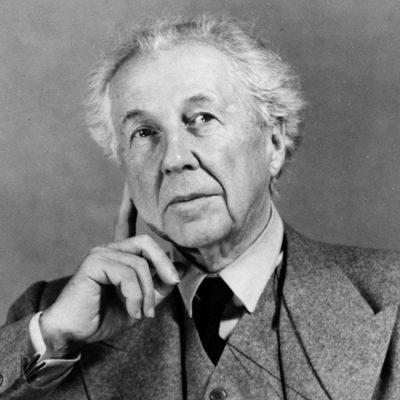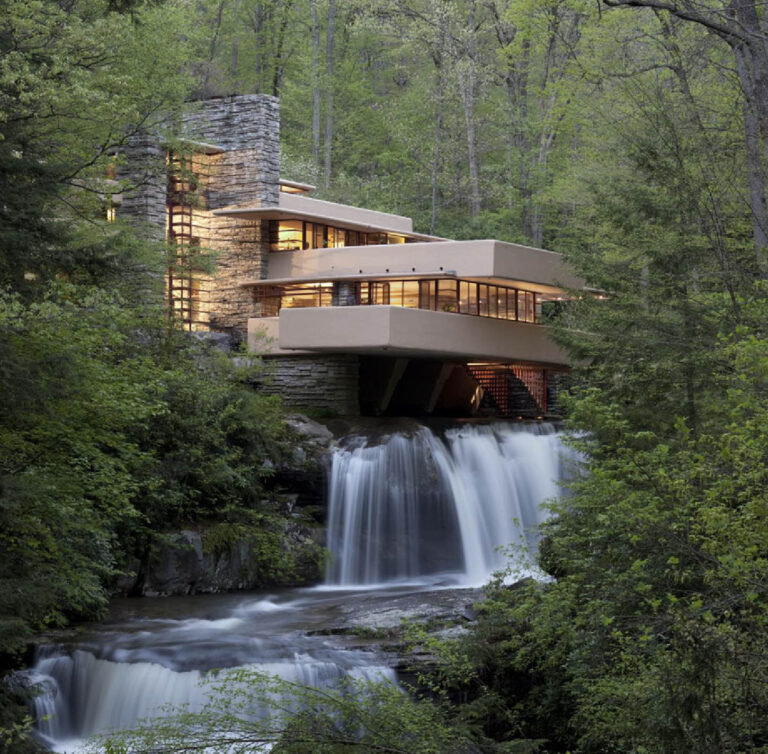Frank Lloyd Wright was born on June 8, 1867, in Richland Center, Wisconsin, USA. He was the eldest of three children and grew up in a family that valued education and the arts. His mother, Anna Lloyd Jones, was a schoolteacher and his father, William Carey Wright, was a musician and preacher.
Wright’s early interest in architecture was sparked by his mother’s gift of a set of Froebel blocks when he was nine years old. He later enrolled in the University of Wisconsin’s engineering program but dropped out after two years to work as a draftsman for several Chicago architecture firms.
In 1893, Wright established his own architectural practice in Chicago, and his early work was heavily influenced by the Arts and Crafts movement, which emphasized traditional craftsmanship and a connection to nature. He gained national attention for his design of the Winslow House in River Forest, Illinois, which featured an open floor plan and a low-pitched roof.
Wright’s most famous works include Fallingwater, a house built over a waterfall in rural Pennsylvania, and the Solomon R. Guggenheim Museum in New York City, which is renowned for its spiraling ramp and unconventional design. He also designed the Unity Temple in Oak Park, Illinois, which is considered a masterpiece of modernist architecture.
Throughout his career, Wright was known for his innovative approach to design, which often incorporated natural materials and a connection to the surrounding environment. He also believed that architecture should be affordable and accessible to all people, and he developed a number of affordable housing projects throughout his career.

Wright’s personal life was tumultuous, and he was married three times. He had six children, including the architect Lloyd Wright, who worked with him on a number of projects.
Wright continued to work into his 80s and passed away on April 9, 1959, at the age of 91. Today, his legacy as one of the most influential architects of the 20th century is celebrated around the world, and his designs continue to inspire architects and designers alike.Frank Lloyd Wright’s architectural style was heavily influenced by a number of different art movements and philosophies, including the Arts and Crafts movement, which emphasized traditional craftsmanship and a connection to nature, and the Prairie School, which was characterized by low-pitched roofs, overhanging eaves, and open floor plans.
Wright’s designs often incorporated natural materials such as wood, stone, and water, and he was known for his innovative use of space and light. He believed that architecture should be in harmony with its surroundings and that buildings should grow out of the landscape rather than simply being placed on top of it.
Wright was also a pioneer of the modernist movement, which emerged in the early 20th century and rejected traditional forms and ornamentation in favor of simple, functional designs. He believed that architecture should be democratic and accessible to all people, and he developed a number of affordable housing projects throughout his career.
Wright’s designs were characterized by their clean lines, simple forms, and use of light and space. He often incorporated geometric shapes and patterns into his designs, and he believed that every element of a building should be in harmony with the others.
Overall, Frank Lloyd Wright’s art style and movement were characterized by a commitment to innovation, a connection to nature, and a belief in the transformative power of architecture. His designs continue to influence architects and designers around the world, and his legacy as one of the most influential architects of the 20th century continues to be celebrated today.

















